You Can't Take It with You

Brief Synopsis
Cast & Crew
Frank Capra
Jean Arthur
Lionel Barrymore
James Stewart
Edward Arnold
Mischa Auer
Film Details
Technical Specs

Synopsis
Anthony P. Kirby, a ruthless banker, is establishing a government-sanctioned munitions monopoly by buying all the land surrounding a competitor's factory, thereby forcing him out of business. His only obstacle is Grandpa Martin Vanderhof, an eccentric who refuses to sell his home. Grandpa's spirited family consists of his daughter, Penny Sycamore, a playwright; her husband Paul, who constructs fireworks; their daughter, Essie Carmichael; Essie's husband Ed, who delivers Essie's homemade candies; and their other daughter, Alice, stenographer to Kirby's son Tony. Tony and Alice are in love, much to the dismay of Tony's mother, whose snobbishness dampens Alice's enthusiasm when Tony proposes to her. That night, Tony meets Alice's family for the first time and is charmed by them. Alice asks Tony to bring his parents to her house for dinner, but Tony, fearing that her family will put on a false front, comes a night early. Chaos ensues, as neither family is quite prepared for the other. Just as the Kirbys are leaving, the police arrive to arrest Ed for flyers he put in Essie's candy boxes, which advertise Paul's fireworks but which the police mistake for Communist propaganda. Just then the fireworks in the cellar are inadvertently set off, and everyone runs out of the house. They are all taken to jail, where Kirby insults the other prisoners and Grandpa loses his temper, telling Kirby he is a failure because he has no friends. Kirby is affected but remains silent, even when Grandpa gives him a harmonica as an apology. They are brought before the night judge, who dismisses the disturbing the peace charge against Grandpa, but fines him $100 for possession of fireworks. Kirby's lawyers offer to pay the fine, but Grandpa's friends pay it instead. The judge will not dismiss the disturbing the peace charge against the Kirbys, however, unless they explain why they were there. Because Mrs. Kirby forbids her husband to reveal the truth, Grandpa covers for them by saying it involved buying the house. Alice then tells the judge the truth and tells Tony to forget their romance, while reporters push in and cause a small riot. Soon after, Alice disappears and not even her family knows where she is. When Alice writes to tell them that she is in the country and that she will never return, Grandpa sells the house so that the family can be together. Kirby's plans progress because of the sale, and just before the board meeting where he will announce the final settlements, he is visited by Ramsey, the competitor he ousted, and Tony. Ramsey warns Kirby that he will die friendless, while Tony tells him that he is quitting the firm and leaving home. Shaken by news of Ramsey's death from heart failure moments later, Kirby is unable to attend the board meeting. Back at Grandpa's house, everyone is packing when Tony arrives. Alice arrives also, and although she is distraught that Grandpa sold the house, she locks herself in her room rather than talk to Tony. When Kirby shows up, seeking Grandpa's advice on how to win back Tony, Grandpa suggests they play a duet of "Polly-Wolly-Doodle" on their harmonicas, and their music cheers everyone up. The dancing and singing begin again, and when Tony and Alice appear, astonished at what they see, Kirby nods his approval at them. Later, at dinner, Grandpa says grace, thankful that the house has been sold back to him and harmony has been restored.

Director

Frank Capra
Cast

Jean Arthur
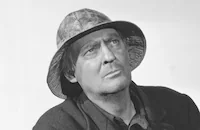
Lionel Barrymore
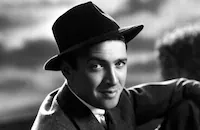
James Stewart

Edward Arnold

Mischa Auer

Ann Miller

Spring Byington
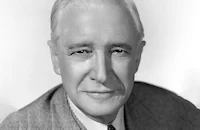
Samuel S. Hinds
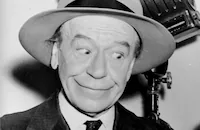
Donald Meek

H. B. Warner

Halliwell Hobbes
Dub Taylor
Mary Forbes
Lillian Yarbo

Eddie Anderson
Clarence Wilson

Josef Swickard

Ann Doran
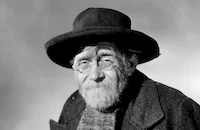
Christian Rub
Bodil Rosing
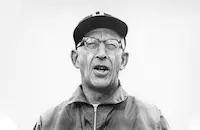
Charles Lane
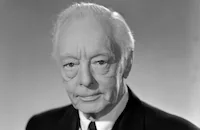
Harry Davenport
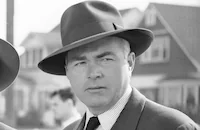
James Flavin

Ward Bond

James Burke

Ian Wolfe
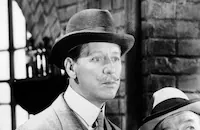
Irving Bacon
Edwin Maxwell

Pierre Watkin
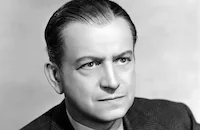
Russell Hicks

Byron Foulger
Chester Clute
Dick Curtis
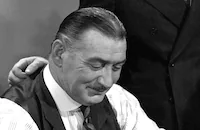
Edward Keane
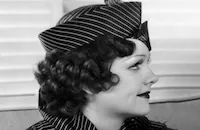
Pert Kelton
Kit Guard
Edgar Dearing
Robert Greig
Crew
Lionel Banks
Maurice A. Bergman
Ed Bernds
Arthur Black
Frank Capra
C. C. Coleman
Stephen Goosson
Garry Harris
Gene Havlick
Irene
William Knight
Bernard Newman
Robert Riskin
Morris Stoloff
Dimitri Tiomkin
Joseph Walker

Photo Collections
Videos
Movie Clip







Hosted Intro



Film Details
Technical Specs

Award Wins
Best Director
Best Picture
Award Nominations
Best Cinematography
Best Editing
Best Sound
Best Supporting Actress
Best Writing, Screenplay
Articles
The Essentials - You Can't Take It With You
Grandpa Vanderhof, the patriarch of the eccentric, free-spirited Sycamore family in Depression era New York, believes people should do only what makes them happy. He thumbs his nose at silly things like money, the government and the IRS. What really matters is having fun. Granddaughter Alice (Jean Arthur) has fallen in love with Tony Kirby (James Stewart), who comes from a privileged family that is all about propriety. When the time comes for Tony's stuffy parents to meet Alice's family, disaster seems well at hand-especially when the Kirbys show up for dinner on the wrong night, making for one hilarious ride.
Director: Frank Capra
Producer: Frank Capra
Screenplay: Robert Riskin (based on the play by George S. Kaufman and Moss Hart)
Cinematography: Joseph Walker
Editing: Gene Havlick
Music Composer: Dimitri Tiomkin
Art Designer: Stephen Goosson
Costume Designer: Bernard Newman, Irene
Cast: Jean Arthur (Alice Sycamore), Lionel Barrymore (Martin Vanderhof), James Stewart (Tony Kirby), Edward Arnold (Anthony P. Kirby), Mischa Auer (Kolenkhov), Ann Miller (Essie Carmichael), Spring Byington (Penny Sycamore), Samuel S. Hinds (Paul Sycamore), Donald Meek (Poppins), H.B. Warner (Ramsey), Halliwell Hobbes (DePinna), Dub Taylor (Ed Carmichael), Mary Forbes (Mrs. Anthony Kirby), Lillian Yarbo (Rheba), Eddie "Rochester" Anderson (Donald), Clarence Wilson (John Blakely), Josef Swickard (Professor), Ann Doran (Maggie O'Neill), Christian Rub (Schmidt), Bodil Rosing (Mrs. Schmidt), Charles Lane (Henderson), Harry Davenport (Judge).
B&W-126m.
Why YOU CAN'T TAKE IT WITH YOU is Essential
Whimsical, funny and heart warming, You Can't Take It with You, like all classics, has stood the test of time. With a Pulitzer Prize-winning play as its source material, the film is a class act in every respect. Director Frank Capra called its central message one of "Love Thy Neighbor," and the message, elegant in its simplicity, is just as relevant today as it was seventy years ago.
You Can't Take It with You marked the first of three highly successful collaborations between director Frank Capra and actor James Stewart. The other two were Mr. Smith Goes to Washington (1939) and It's a Wonderful Life (1946).
While James Stewart had made a few films by the time he did You Can't Take It with You, he was not yet a star. Frank Capra had tremendous faith in Stewart as a leading man, and the film's success was a great boost to Stewart's career, helping establish him as a bona fide star.
You Can't Take It with You was the sixth straight box office smash from director Frank Capra and won him his third Academy Award as Best Director. Capra was on a roll, and this film is one of the finest examples of his cinematic legacy.
A true ensemble piece, You Can't Take It with You boasts one of the most distinguished casts ever to appear in the same film. Actors include Lionel Barrymore, Jean Arthur, James Stewart, Edward Arnold, Spring Byington, Ann Miller, Donald Meek, Dub Taylor, and Mary Forbes.
by Andrea Passafiume

The Essentials - You Can't Take It With You
Pop Culture 101 - You Can't Take It With You
You Can't Take It with You was adapted into at least four television versions.
A 1979 television adaptation of You Can't Take It with You featured an all star cast that included Art Carney as Grandpa Vanderhof, Jean Stapleton as Penny Sycamore, Barry Bostwick as Anthony Kirby, Jr., Blythe Danner as Alice Sycamore, Howard Hesseman as Wilbur Henderson, Polly Holliday as Miriam Kirby, Beth Howland as Essie, Kenneth Mars as Kolenkhov, and Marla Gibbs as Rheba.
The play was revived in a 1955 television segment of NBC's Ford Theater called The Fabulous Sycamores and starred Cecil Kellaway as Grandpa Vanderhof.
You Can't Take It with You was turned into a short-lived television series in 1987 starring Harry Morgan as Grandpa Vanderhof.
by Andrea Passafiume
Pop Culture 101 - You Can't Take It With You
Trivia - You Can't Take It With You - Trivia & Fun Facts About YOU CAN'T TAKE IT WITH YOU
The play was still running on Broadway when the film of You Can't Take It with You was released. It marked the first time in history that a Broadway play and a film based on the same play ran simultaneously.
When You Can't Take It with You was being reviewed by the Production Code Administration, PCA Director Joseph Breen was reportedly concerned about the way the film's African American characters Donald and Rheba interacted with the Caucasian family. According to the American Film Institute, he wrote in a letter to Columbia Pictures President Harry Cohn, "[When] showing the negro characters Reba [sic] and Donald, care should be taken to avoid objection in the Southern sections of this country where the showing of negroes in association with whites has sometimes been subjected to criticism by the public generally and to deletion by political censor boards. Such criticism has been based on the feeling that negroes in pictures have been shown on terms too familiar and of 'social equality'."
Frank Capra's 3-year-old son Johnny died just before the release of You Can't Take It with You from complications that arose following a routine tonsillectomy.
The play of You Can't Take It with You has 19 parts for actors. The film version has 153.
Famous Quotes from YOU CAN'T TAKE IT WITH YOU
"Maybe it'll stop you trying to be so desperate about making more money than you can ever use? You can't take it with you, Mr. Kirby. So what good is it? As near as I can see, the only thing you can take with you is the love of your friends." Lionel Barrymore (as Grandpa Vanderhof)
"Lincoln said, 'With malice toward none, with charity to all.' Nowadays they say, 'Think the way I do or I'll bomb the daylights outta you.'" Lionel Barrymore (as Grandpa Vanderhof)
"Sometimes you're so beautiful it just gags me." James Stewart (as Tony Kirby), to Jean Arthur's Alice Sycamore.
"You know, every time I think about how lucky I am, I feel like screaming." James Stewart (as Tony Kirby)
"If you had any sense, young woman, you'd stay where you belong and stop being ambitious." Mary Forbes (as Mrs. Kirby), to Jean Arthur's Alice
"The die is cast. I'm a lily!" Donald Meek (as Poppins) "Confidentially, she stinks." Mischa Auer (as Kolenkhov), referring to Essie's ballet dancing.
Compiled by Andrea Passafiume
Trivia - You Can't Take It With You - Trivia & Fun Facts About YOU CAN'T TAKE IT WITH YOU
The Big Idea - You Can't Take It With You
While the play of You Can't Take It with You was enjoying its success on the stage, director Frank Capra was also riding a wave of success making films for Columbia Pictures in Hollywood. Having already won two Academy Awards® for directing It Happened One Night (1934) and Mr. Deeds Goes to Town (1936), Capra was the jewel in the Columbia crown. Like many people, however, Capra butted heads with the studio's temperamental mogul, Harry Cohn. A dispute between the two in 1937 had escalated to Capra's eventual year-long suspension from the studio, which would later play a part in bringing You Can't Take It with You to the big screen.
Frank Capra first got the idea to make a movie of the Kaufman-Hart play when he was in New York for the opening of his film Lost Horizon (1937). On a whim he went to the Booth Theater to see the play You Can't Take It with You and he absolutely loved it. "Its witchery was so entrancing," Capra recalls in his 1971 autobiography The Name Above the Title, "wild horses couldn't have dragged me away before final curtain." Things were still tense between Capra and Harry Cohn, but there was no denying that when they worked together, the result was great films. "You Can't Take It with You had to be my next film," said Capra. "But-producer Sam Harris' asking price was staggering: two hundred thousand dollars! Harry Cohn's squeal blew out the phone fuses." According to Capra, Cohn's response was, "I wouldn't shell out two hundred G's for the second coming!" In the end, however, Cohn made the record purchase on Capra's behalf partly because he knew that by giving him You Can't Take It with You it would help to make peace between them. It also didn't hurt that Cohn managed to secure the rights to it before his rival Louis B. Mayer did.
Writer and frequent Capra collaborator Robert Riskin was hired to adapt the play for the screen. Capra and Riskin worked closely on the script, making some changes from the stage version here and there, including beefing up the part of Tony Kirby and adding some new peripheral characters such as Mr. Poppins.
One of the reasons that Riskin and Capra beefed up Tony Kirby's part was because of James Stewart. Frank Capra had first noticed the gangly young actor in MGM's Navy Blue and Gold (1937) and was impressed. "I sensed the character and rock-ribbed honesty of a Gary Cooper," recalled Capra in his autobiography, "plus the breeding and intelligence of an ivy league idealist." He was sure that Stewart had what it took to be a major star. In order to get James Stewart for You Can't Take It with You, Capra had to make arrangements to borrow him from MGM, where Stewart was under contract at the time. MGM was happy to loan Stewart out since the film was based on a Pulitzer Prize-winning play and promised to be a prestigious film. It could only be a good thing, they thought, to have one of their stars associated with a top-notch picture, even if it didn't come from MGM.
For the key role of Grandpa Vanderhof, Capra settled on Lionel Barrymore, whom he later referred to as "the humblest, most cooperative actor I've ever known." Despite suffering from a variety of physical ailments, Barrymore was game to be in such a distinguished film. "When I interviewed him for the Grandpa Vanderhof part," recalled Capra, "he was crippled with arthritis. His hands, elbows, feet and knees were as stiff and knobby as old oak roots. He couldn't walk or pick up a spoon; needed hourly shots to ease the killing pain. His body was a mess. But not his verve. 'I'll play the part on crutches,' [Barrymore] said with a laugh. 'Just put a cast on my foot to alibi them. That'll do it.'" Since Barrymore was perfect for the part, that is exactly what they did.
From the beginning, Capra wanted actress Jean Arthur for the part of Alice Sycamore. He had used her before in Mr. Deeds Goes to Town and was a big fan, calling her "the finest actress of the day." Arthur was thrilled to take on the part.
Casting the role of Penny, the would-be novelist, proved to be more of a challenge for Capra. His first choice was actress Fay Bainter, but she was unavailable. Serendipitously, actress Spring Byington was suggested for the part, and she turned out to be perfect for Penny, making Capra happy with the choice.
Ann Miller, who was just getting started in Hollywood, had long been fibbing about her age in order to work. Tall and shapely, Miller looked like a mature woman and could get away with playing the married character of Essie in You Can't Take It with You. She was only 15 years old, however, and in awe of her big chance to be among such talented people. "Although I was young," she writes in her 1972 autobiography Miller's High Life, "I had sense enough to realize what a great opportunity it was for me to work with movie people of such magnitude." Miller was one of many who had auditioned for the role of Essie, an aspiring ballerina. It was crucial that whoever played Essie be able to do ballet toe work. Miller had received ballet training, but never in toe shoes. Eager for the part, Miller fibbed again and said that she could handle the toe work. When she was handed a pair of toe shoes and asked to demonstrate her skills at the audition, Miller wasn't sure how to properly wear them. She didn't understand that you were supposed to wrap the accompanying lamb's wool around her toes for protection and pad the toe area of the shoes. "But since I'd never handled toe shoes before," she said, "when they gave me this wad of stuff, I thought it was something you put in your hair...and I tossed it aside. I went out there and did the test standing on my toes, won the part, and then worked throughout that picture without the lamb's wool in my shoes because nobody told me to stick it in there."
To portray Essie's xylophone playing husband, Ed, Frank Capra was interviewing men who could actually play the instrument. One of the people who showed up to audition was Dub Taylor, who played the song "Dinah" on the xylophone for Capra. "His southern accent dripped hominy grits," said Capra in his autobiography. Taylor was perfect and made Capra laugh. He was cast on the spot. The small but memorable role would mark Dub Taylor's first ever appearance in a film.
Armed with a terrific script and cast, cameras were ready to roll on You Can't Take It with You in the spring of 1938. It was a film that Capra was extremely excited to make. "Why this mania to film Kaufman and Hart's play? Because it was a laugh riot? A Pulitzer Prize play? Of course," said Capra. "But I also saw something deeper, something greater. Hidden in You Can't Take It with You was a golden opportunity to dramatize Love Thy Neighbor in living drama. What the world's churches were preaching to apathetic congregations, my universal language of film might say more entertainingly to movie audiences."
by Andrea Passafiume
The Big Idea - You Can't Take It With You
Behind the Camera - You Can't Take It With You
For teenager Ann Miller, the part of Essie was a dream come true and she wanted to make a good impression. To her great embarrassment, however, she immediately committed a faux pas regarding director Frank Capra. "I knew Frank Capra only by name, not by sight," she explains in her 1972 autobiography Miller's High Life. "And since no one bothered to introduce us, my first day on the set I mistook him for an office boy-and I guess I treated him like one until someone set me straight. He was good-naturedly letting me get away with it." Meanwhile, because of her ignorance regarding how to properly protect her feet while wearing ballet toe shoes, Miller was in pain for most of the filming. Ever the professional, though, she put on a happy face and didn't dare complain. "I got out there and danced on my toes and did what I was supposed to do, all right. I was supposed to be rotten anyway, in the picture, and I was in such pain that it was easy enough to play the role of a lousy ballet dancer. But what it did to my toes! It almost crippled me...by the time I finished work my feet were a bloody mess. Every night my mother would make me soak my feet and she would put bandages on them. Then I would go back the next day and do it all over again." Sometimes co-star James Stewart would catch Ann Miller off by herself crying. Attempting to cheer her up, Stewart would always offer her a candy bar, which she would gladly take. She ate so many of Stewart's candy bars while making You Can't Take It with You that she had gained 24 pounds by the time shooting was over. Despite the weight gain, she never forgot his well-intentioned kindness.
Despite having to dance in pain throughout the making of the film, Ann Miller still found her experience on You Can't Take It with You "magical." James Stewart also found working with Capra to be wonderful. "He brings out the best in an actor," said Stewart. "He doesn't demand effects, he coaxes them out of you; I wouldn't call his direction subtle so much as evocative, gently guiding...I think his approach is a unique one among directors. Certainly it worked magically for me."
When You Can't Take It with You was completed, the word of mouth was so good that Columbia was confident enough to hold a massive international press screening prior to its release. Reviews were phenomenal, and Capra's sixth straight box office hit won the Academy Award for Best Picture while Capra himself took home the award as Best Director.
by Andrea Passafiume
Behind the Camera - You Can't Take It With You
You Can't Take It With You
While in New York for the opening of yet another of his critically lauded films, Lost Horizon (1937), Capra caught a performance of George S. Kaufman and Moss Hart's Pulitzer Prize-winning play, You Can't Take It With You. Capra was so thrilled with Kaufman and Hart's family full of eccentrics, he immediately knew that he wanted to film the play. Unfortunately, producer Sam Harris' asking price was $200,000. This was an unheard of sum of money at the time, even for a proven, award-winning property. Harry Cohn blew a gasket over the demand, memorably shouting, "You tell that gonif Harris I wouldn't shell out 200 G's for the second coming!"
But shell out he did, to banner headlines (and, it should be noted, free advertising) in the trade papers. Capra and writer Robert Riskin immediately went to work on the play, giving it a warmer reading. They shifted the narrative's emphasis to business tycoon Anthony Kirby's (Edward Arnold) attempt to buy up a residential area where he wants to build a new factory. However, one man, Martin Vanderhof (Lionel Barrymore), won't sell his house. Vanderhof and his family live by the credo that you should do literally whatever you want to do in life, whether it's writing terrible books, performing ballet badly while your husband plays the xylophone, or (in Martin's case) breaking your leg while sliding down a banister. Money means nothing to them.
By coincidence, Vanderhof's relatively "normal" granddaughter, Alice Sycamore (Jean Arthur), is the secretary to Kirby's son, Anthony Kirby, Jr. (Jimmy Stewart.) Alice and Anthony fall in love and plan to marry, which engenders a memorable dinner gathering between the two families.
The Kirbys accidentally show up a day early, thus getting a full dose of the Vanderhofs' raging eccentricities. Kaufman and Hart's screwball structure allows for a galloping cast of characters - including Ann Miller, in a memorable turn as Vanderhof's ballet-obsessed daughter - to wreak so much havoc, it's impossible to describe it all in this space. Suffice it to say that dinner is topped off by a batch of homemade fireworks blowing up in the basement, which, along with the unknowing distribution of some Communist pamphlets, results in the arrests of both families.
This turn of events puts Alice and Anthony's nuptials in jeopardy, albeit just long enough for a sunny, Capra-esque ending to save the day. He even drags out a harmonica to drive his point home. As big a hit as the movie was, some fans of the play thought, not without reason, that Capra had de-fanged it.
In his autobiography, The Name Above the Title, Capra pauses from describing You Can't Take It With You to wax philosophical on directing. "This is the artistry of the film director," he wrote, "to convince actors that they are real flesh and blood human beings living a story...This self-convincement of actors applies with equal force to those playing the smallest of parts. Does a star, paying his hotel bill, pay it to a bit actress or to a real cashier?" He goes on to describe how giving even the smallest characters a background story, something the actor can carry with them throughout a scene, ensured the reality that sold his pictures.
Capra adored actors. He was pleased, as he should have been, to meet up with Jimmy Stewart, who pretty much made his name with You Can't Take It With You, then enjoyed legendary success in Capra's Mr. Smith Goes to Washington (1939) and It's a Wonderful Life (1946), among many, many others. But, proving once again his concern for even the smallest parts, Capra liked to tell a story about the casting of then-unknown Dub Taylor as Miller's xylophone-playing husband, Ed.
"I was interviewing xylophone players," he wrote, "when in walked a merry oaf wearing a perpetual infectious grin as big as a sunburst. Sweat drops gleamed on his forehead. "I'm Dub Taylor, and I kin play the xylophone." His very presence evoked laughter. "Have you ever played in a picture, Mr. Taylor?" I asked. "No suh, I ain't. But I played in the Rose Bowl on the Alabama football team." His Southern accent dripped hominy grits. I asked him to play the xylophone I had in the office."
Taylor went on to play a hysterical, scatterbrained rendition of "Dinah" that won him the part, as well as a place in Capra's heart. When Capra later heard that Taylor was in financial trouble and that he and his wife were expecting a baby, he put him on salary for a few months before shooting started to take unnecessary "xylophone lessons," just so he could make a few more dollars. Who says nice guys finish last? This one ended up with a pile of Oscars.
Produced and directed by: Frank Capra
Screenplay: Robert Riskin (based on the play by Moss Hart)
Cinematography: Joseph Walker
Editing: Gene Havlick
Music: Dimitri Tiomkin
Art Design: Stephen Goosson Costume Design: Bernard Newman and Irene Principal Cast: Jean Arthur (Alice Sycamore), Lionel Barrymore (Martin Vanderhof), James Stewart (Tony Kirby), Ann Miller (Essie Carmichael), Mischa Auer (Kolenkhov), Spring Byington (Penny Sycamore), Samuel S. Hinds (Paul Sycamore), Donald Meek (Poppins), Dub Taylor (Ed Carmichael).
BW-126m. Closed Captioning.
by Paul Tatara
You Can't Take It With You
Critics' Corner - You Can't Take It With You
You Can't Take It with You was nominated for seven Academy Awards: Best Picture, Best Director, Best Supporting Actress (Spring Byington), Best Cinematography, Best Editing, Best Sound and Best Adapted Screenplay. It won two for Best Picture and Best Director.
THE CRITIC'S CORNER YOU CAN'T TAKE IT WITH YOU (1938)
"One of the most utterly irresistible, delightful, human and entertaining films I have ever seen." New York Telegram
"Not only the year's best film, it is one of the finest on record." -- New York Sun
"The comedy is wholly American, wholesome, homespun, human, appealing, and touching in turn....Miss Arthur, the very appealing quality of her speaking voice carrying her far on the screen and again here, acquits herself creditably. Stewart is not a strong romantic lead opposite her but does satisfactorily in the love scenes. Others are tops from Lionel Barrymore down...Riskin's adaptation, retaining as much of the original Kaufman-Hart dialog as possible, adding for other parts, represents a capable job. It was a one-man assignment of important propositions." -- Variety
"Columbia's film of the play, which moved into the Music Hall yesterday, has had to justify that Pulitzer award. Simply because it is a motion picture, and not a play, it has had to explore the Kaufman-Hart characters more thoroughly than the playwrights had need to...Frank Capra, its director, and Robert Riskin, its adapter, have vindicated that Pulitzer award, even at the expense of comedy...You Can't Take It with You isn't as comic on the screen as it was on the stage. At least, not in its total effect. When it chooses to be funny it can be funny as the dickens. But it chooses, too, on the screen, to be serious and, at times, moral and sentimental...It's a grand picture, which will disappoint only the most superficial admirers of the play. Columbia, besides contributing the services of its famous writing-directing team, has chosen its cast with miraculous wisdom. Lionel Barrymore's Grandpa is the least bit of a let-down after Henry Travers's playing of the role on Broadway, but we're willing to admit our dissatisfaction may be due to the fact that Mr. Travers's Grandpa came first. Beyond that prejudicial doubt we enthusiastically admire every one and everything--Jean Arthur's Alice Sycamore, James Stewart's honest young Kirby, Edward Arnold's badgered tycoon, Spring Byington's delightful Penny, Donald Meek's Mr. Poppins (a new one on Mr. Kaufman) and all the other names on the long cast sheet. And, before we forget it, You Can't Take It with You jumps smack into the list of the year's best." The New York Times
Compiled by Andrea Passafiume
Critics' Corner - You Can't Take It With You
Quotes
Maybe it'll stop you trying to be so desperate about making more money than you can ever use? You can't take it with you, Mr. Kirby. So what good is it? As near as I can see, the only thing you can take with you is the love of your friends.- Grandpa Martin Vanderhoff
Lincoln said, "With malice toward none, with charity to all." Nowadays they say, "Think the way I do or I'll bomb the daylights outta you."- Grandpa Martin Vanderhof
Trivia
Columbia paid $200,000 for the film rights to the play.
Notes
The play You Can't Take It with You won the Pulitzer Prize for the 1936-37 season, and was still playing on Broadway when this film was released. A December 23, 1936 Hollywood Reporter news item reported that Paramount had "taken an option" on the play, but no further information about Paramount's involvement has been found. According to the film's production notes, Columbia paid $200,000 for the film rights to the play. Although a Hollywood Reporter news item stated that Tony Labriola was being tested for a part in the picture, his participation in the completed film has not been confirmed. According to the film's file in the MPAA/PCA Collection at the AMPAS Library, PCA Director Joseph I. Breen was concerned about the interactions between "Donald" and "Rheba" and their employers, the Vanderhof family. In a letter to Harry Cohn, Breen stated: "[when] showing the negro characters Reba [sic] and Donald, care should be taken to avoid objection in Southern sections of this country where the showing of negroes in association with whites has sometimes been subjected to criticism by the public generally and to deletion by political censor boards. Such criticism has been based on the feeling that negroes in pictures have been shown on terms too familiar and of 'social equality.'"
You Can't Take It with You marked the screen-acting debut of Dub Taylor. The film received Academy Awards for Best Picture and Best Director and was nominated for Supporting Actress (Spring Byington), Screenplay, Cinematography, Film Editing and Sound Recording. It was also voted one of the ten best pictures of 1938 by the Film Daily Poll of Critics. A New York Times article states that the picture was shot at the Columbia Ranch in Burbank, CA in sight of the sets constructed for Lost Horizon, Capra's previous film. On August 23, 1938, Columbia held a special, international press preview of the film. On that same day, Capra's three-year-old son John died of a cerebral hemorrhage. According to Capra's autobiography, he originally wanted Fay Bainter for the role of Penny Sycamore. Modern sources list the following technical credits: Casting dir Bobby Mayo; and Cam crew William Jolley, Sam Rosen, Lee Davis, and Victor Scheurich. Also listed are the following cast members: Edward Hearn (Court attendant); Eddy Chandler (Plainclothes policeman); and John Hamilton and Major Sam Harris (Diners). On October 2, 1939, Edward Arnold and Robert Cummings performed a radio broadcast of You Can't Take It with You for Lux Radio Theater. The play has been revived many times, including television presentations such as The Fabulous Sycamores, a segment of the NBC Network's Ford Theater, broadcast in 1955, directed by Edward Buzzell and starring Cecil Kellaway as "Grandpa"; a 1979 CBS presentation of the play directed by Paul Bogart and starring Art Carney as "Grandpa"; and a 1980s Broadway revival, taped and shown subsequently on television, directed by Ellis Raab and starring Jason Robards as "Grandpa."

Miscellaneous Notes
Released in United States 1938
Released in United States 1978
Released in United States Fall September 29, 1938
Released in United States June 2010
Released in United States on Video October 19, 1989
Shown at Los Angeles Film Festival (Paul Reubens Presents) June 17-27, 2010.
Released in United States 1938
Released in United States 1978 (Shown at FILMEX: Los Angeles International Film Exposition (Special Programs - "Salute to Oscar" - Filmex Marathon) April 13 - May 7, 1978.)
Released in United States June 2010 (Shown at Los Angeles Film Festival (Paul Reubens Presents) June 17-27, 2010.)
Released in United States Fall September 29, 1938
Released in United States on Video October 19, 1989













